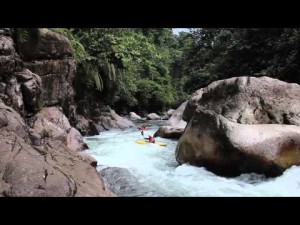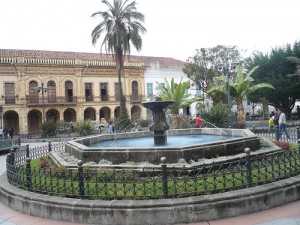The Ecuador 3 Count, where we bring you 3 Ecuador stories that you shouldn’t miss.

Photo Credit: Rinaldo Wurglitsch
1. Why Are You Waiting? 4 Fantastic Reasons Why Now Is the Time to Invest
First Up: Not so long ago, you would have been nuts to invest in Ecuador. Socialistic leader Rafael Correa has just secured another 4 year term and vows to keep at his “citizen revolution”, which so far, is unfavorable for Western investors. Foreign direct investment now stands at less than 1% of GDP – but there are reasons to consider Ecuador for investment. We’ve listed the top 4 reasons to take the leap and invest in Ecuador.
2. Why Haven’t You Checked Out Cotacachi?
Next Up: One reason for Ecuador’s popularity with the retired gringo set is the climate. Many move to Cuenca and Quito, but there are also the spectacular Ecuadorean Andes. As expat Susan Haskens found, not only is Ecuador budget-friendly, it also comes with spectacular views.
3. Here’s Why Alice Traded in Cleveland for Cuenca
When Alice Goers decided to retire she know it would be beyond Cleveland, Ohio. Moving overseas was something else entirely, an idea that, when she began planning for her retirement, didn’t even occur. Alice made a list of all the things that were important to her in retirement, and then she began researching everything she could on the idea of retiring to a new country where she might find those things. She found it all in Cuenca, Ecuador.
Of all of the cities in Ecuador, Cuenca is arguably the most charming with its cobblestone streets, old-world cathedrals, colonial parks, and mountain vistas. In Cuenca, there is never a lack of things for an expat to do over a weekend. We’ve rounded up five to get you started.
1. Eat Lunch at the Inca Ruins of Ingapirca
Just a two-hour drive outside of Cuenca is Ingapirca, the largest Inca ruins in Ecuador. As you explore by foot, take notice of typical regional handicrafts, including pottery, leather goods, and more. Many hotels offer guided tours to the ruins, known for its many stone structures surrounding the prominent circular sun temple. Find a comfortable seat and watch craftsmen weave Panama hats while you enjoy a typical Ecuadorian meal.
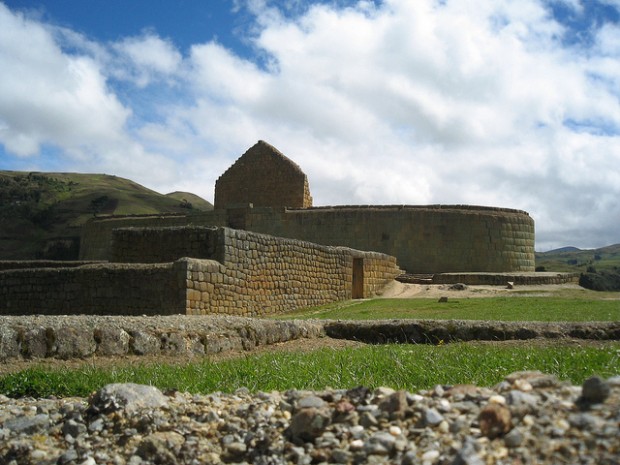
Inca stone ruins of Ingapirca, Ecuador
2. View Cuenca from Atop the Mirador de Turi
For an impressive view of Cuenca, take a taxi south of town along Avenida Solano to the stark white Church of Turi, that sits high on a hillside in the southern suburb of Turi. The views are especially grand on the holidays and in the evenings when all of Cuenca’s churches’ steeples and domes are lit throughout town.

See Cuenca from atop Mirador de Turi.
3. See a Shrunken Head at Museo Pumapungo
Cuenca’s most important museum, Museo Pumapungo is home to five rare and eerie tzantza (shrunken heads) from the Shuar culture of the southern Oriente of Ecuador. Take your time, the museum is a great place to take in Ecuador’s vast cultural offerings where you can see traditional costumes of the country’s indigenous cultures, to Afro-Ecuadorians from Esmeraldas province, along with the cowboy-like montubios (coastal farmers) of the western lowlands.

See a shrunken head at Cuenca’s most important museum, Museo Pumapungo.
4. Take a Hiking Tour of Cajas National Park
With over 250 lakes and a natural abundance of flora and fauna, Cajas National Park is a popular hiking location at the doorstep of Cuenca. Offering all types of hiking grades, up to 12,000 feet, the park operates in all types of weather conditions, so be prepared. But if you need to get out of the city for a bit, it is a perfect day-long escape into nature.
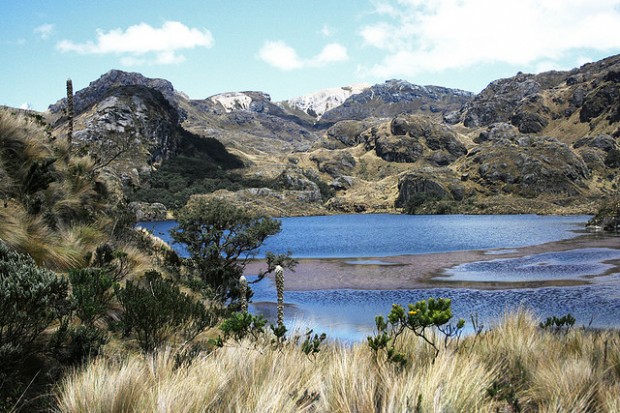
Day hike the Cajas National Park.
5. Take a Postcard-Worthy Picture of the Catedral de la Inmaculata Concepción
Make certain to charge your camera for the focal point of Parque Calderón, Catedral de la Inmaculata Concepción, with its signature twin blue domes that have become the city’s hallmark symbol. The massive church whose austere marble interior took nearly 80 years to complete from its 1885 start date has beautiful stained glass windows and is particularly compelling during an evening service.
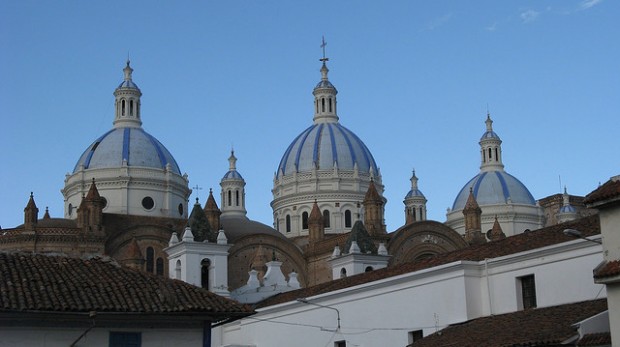
Take a photo of Cuenca’s most famous blue domes.
Did we miss your favorite spot in Cuenca? Let us know where you spend your weekends!

Cuenca, Ecuador photo by Jonathan Hood
When considering relocating to Latin America, many would-be expats quickly narrow their search down to the countries of Ecuador and Panama. And why wouldn’t they?
Ecuador has topped out International Living’s list of best places to retire for five years running, with Panama always following closely in the second or third spot. This list is based on an index of different factors such as climate, cost of living, culture, and many more. However, much of this criteria is highly subjective. The hot, humid climate you enjoy could be someone else’s idea of misery. Likewise the Burger King on the corner might be a welcome sight to some, but for you it might evoke the very feelings that prompted you to leave behind the cookie-cutter culture of the States.We’ve outlined some of the major differences between the two countries below, but don’t take our word for it. The best decision-making tool is your own observation. Plan a trip, and check things out for yourself.
Cost of Living
In this category, the advantage goes to Ecuador. In most parts of the country, you can easily get by on about $1,200 per month, including rent. This number gets even lower the further you venture into the rural areas where monthly rent can run as low as $150 per month. Combine that with an average cost of $1.90 for a four course meal, $1.50 for a gallon of gas, and the help of a domestic servant for a mere $10 a day. While it is possible to get by on the same $1,200 in Panama, it would be with a standard of living that more closely resembled that of the locals.
Real Estate
While Ecuador wins this one for its low cost homes, Panama may have a slight edge when it comes to the ease of the entire process. New homes in Ecuador are well below the $100/square foot price. That’s half the price of comparable homes in Panama, although the construction is different. Homes in Ecuador are built of cement and red clay.
The home buying process is easier in Panama, where international banks are quick to offer financing to foreign residents. Closing costs are twice as high in Panama (around 6%). However, property owners in Panama may be exempt from property taxes for a number of years if the home is their only residence.
Transportation
The infrastructure of Panama closely resembles that of the U.S., and its roads are much more well-maintained. Other than that, there’s little difference between the two countries. Ecuador offers several options for public transit, including buses and taxis, that average around $1 per hour. However, they may not be the safest options (See Safety below.) Panama offers similar modes of transportation for a slightly higher premium. Both countries offer convenient direct flights to several U.S. hubs from a few key cities.
Health Care
While health care in both countries is better than you’d expect, the quality may be slightly higher in Panama, particularly in David and Panama City. Panama boasts many private hospitals with English-trained and English-speaking doctors. In both countries the cost is lower than U.S. health care, up to 90% lower in Ecuador where doctors will even make house calls for less than $25. Both countries also offer a variety of health insurance options for foreigners.
Familiarity
Now here’s where personal preference really plays a big factor. While we can’t say which countries earns the most points in this category, we can tell you which one most closely resembles the culture of the U.S. It’s Panama. With a much larger and more established expat community, Panama will initially feel the most like home. It’s up to you to decide whether that’s the atmosphere you’re seeking.
Both countries use the U.S. dollar, so there’s little risks associated with currency exchange. English is widely spoken in both, although in Ecuador it’s largely confined to touristy locations and international business areas. Both are also home to many U.S.-based restaurant chains and other franchises. Modern conveniences are found in both, although internet service is reportedly much better in Panama. It’s true in both countries that communication is more accessible the closer you are to the larger cities.

Boquete, Panama photo by Ken Mayer
Climate
While this factor also depends greatly on your own personal taste, most will probably prefer Ecuador for its more temperate and varied climate. Panama is mostly hot and humid everywhere with large amounts of rainfall, particularly in May through December, although it’s slightly lower on the Pacific coast than the Caribbean side. The only real difference in the country’s climate is in the higher elevations where the temperatures and rainfall both decrease. Some areas may see temps in the 50’s versus the 84 degree average near the coast.
Ecuador experiences a more diverse climate across its four main regions. The mountainous Andean Sierra boasts average temperatures of 75 degrees by day and around 60 at night. With a lot of sunshine, 12-hour days, and relatively low humidity, its climate is considered by most to be nearly perfect. Ecuador’s coastal region and the Amazon rain forest more closely resemble the climate of Panama: hot and humid all year with temps ranging from 80 to 95 degrees and year-round rain. The Galapagos Islands have much milder temperatures and less rainfall.
Culture
While Ecuador and Panama both have plenty of cultural attractions, the edge here goes to Ecuador. While both countries boast many activities and forms of entertainment, those in Ecuador are often more authentic and less Americanized. With over 28 indigenous groups speaking more than 10 languages, evidence of the country’s heritage fills the marketplaces and festivals that abound in the South American nation. Panama is also a culturally rich country, but often in the form of museums and shopping districts.
Residency and Retirement Benefits
Panama wins this one, hands down. Requirements for a pensioner’s visa are similar between the two ($1000 per month income in Panama versus $800 in Ecuador). However Ecuador offers very few incentives for retirees. Panama, on the other hand, boasts a long list of discounts for those who qualify for its pensioners program. This includes savings of between 10 to 50 percent on virtually every category of goods and services including utilities, closing costs, entertainment, travel, and even health care. In addition, retirees can import up to $10,000 in household goods duty-free, as well as a personal vehicle every two years. And retirement in Panama has never been easier. Recent legislation has expanded its residency program to include individuals who may seek employment upon relocation, at least for citizens of the 47 “Specific Countries” on its list. This change was implemented to counteract the current labor shortage in the country.
Investment Potential
Buying property in both Panama and Ecuador can be a good investment. Since Ecuador generally offers more affordable options, its homes often have more potential for appreciation. However, even more advantageous than buying a home is the opportunity to invest in land in some of the more remote areas where expats are only just beginning to develop an interest. For those savvy enough to get in during the early stages, there’s much money to be made once development begins.
Investing in land won’t get you quite as far in Panama. Since expat communities there are more established, the lots are more expensive. You’d best build if you want to turn a profit. Panama does, however, have a much better rental market than Ecuador and more property management companies to provide assistance. Properties in Panama consistently experience higher occupancy and rent for a high premium.
Safety
While both countries have areas that are safer than others, Panama is definitely the safest overall. In fact it’s one of the safest in Central America, experiencing less violent crimes in a year than New York City does in a day. The country also saw the addition of the Tourism Police Force in 1992, which was specifically established to assist tourists in Panama City. Conversely, Ecuador is plagued with a murder rate of 19 people per every 100,000, four times that of the U.S. Even more alarming is the fact that much of the country’s violent crime occurs in areas heavily populated by tourists. Public transportation, especially taxis, are prime targets for criminals. It’s recommended that all taxis be radio-dispatched. Don’t just hail one on the street.
Schools
Panama wins again, with free public education that is a requirement for children ages 6 through 15. Investments are currently being made into the education system, to increase the number of educated adults in the workforce due to the labor shortage mentioned previously. Several good private schools also exist, many of which are bilingual. By stark contrast, Ecuador’s education system is in the bottom 50 world-wide. While it does have some private school options, most aren’t truly bilingual, only teaching English as a second language.
Things to Do
There is no shortage of activities in either Panama or Ecuador, and we would be hard-pressed to award this category to one country over the other. Both have options for exploring nature, such as whale or bird watching. There are also plenty of opportunities for adventure, like hiking or rafting. No matter what you’re into, you’re sure to find a place to enjoy your favorite hobby or perhaps develop a new one.
The Travel 3 Count, where we bring you 3 travel stories that you shouldn’t miss.
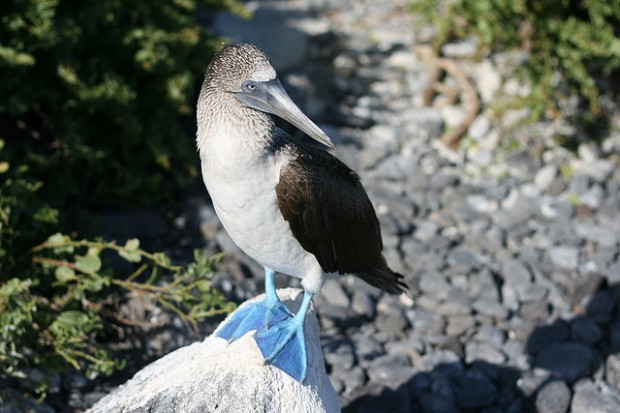
Ecuador’s Galapagos is a must see destination in 2013.
1. Destinations to Watch in 2013
First Up: Conde Nast Traveller’s destinations to watch in 2013 list includes some of Latin America’s gems. Here are the top Latin America destinations to watch in 2013.
- Panama. No longer just a place where ships pass in the night, Panama is the cool Caribbean destination of the moment.
- Mexico’s Mayan Riviera. The Mayan Riviera is set for a bounteous year in 2013.The vibe is deliberately hippy-chic, lo-fi by day and up-tempo at night and is a great place to stay for discerning travelers seeking barefoot luxury.
- Ecuador’s Galápagos Islands Galápagos is one of the most fascinating places on earth, an evolutionary melting pot. It’s already at the top of many wishlists, for the intrepid and for animal-lovers.
2. 21 Cheap Places to Visit… Where Does Latin America Come In?
Up Next. Want to travel, but don’t want to spend lots of money? These 21 cheap travel destinations let you get the most bang for your buck. Want to try it? Tim Leffel’s can help. His mission is to show cheapos how to find travel destinations they can afford.
Where is his favorite cheap spot in Central America’s? Ometepe, Nicaragua.
In Nicaragua, it’s a wide-open blank slate, because there isn’t much tourism outside of Granada and San Juan Del Sur. That means there are but a few nice hotels and restaurants and your main mode of transportation is mostly on chicken buses. But if you want cheap and exciting, Nicaragua is your choice.
3. 6 Must See Latin American Destinations
Finally: With over 7 million square miles to cover and 430 million people to meet between Central and South America, deciding where to start your Latin American adventure can be a little tricky, but with Bootsnall Travel Guide’s six must-see Latin American destinations, the planning just got easier.
- 1. Quito, the Amazon, and Cuenca – Ecuador
- 2. Rio de Janeiro and Iguazu Falls – Brazil
- 3. Lima, Cuzco, Lake Titicaca and Machu Picchu – Peru
- 4. Buenos Aires to Santiago via Bariloche – Argentina & Chile
- 5. La Paz, Sucre and more – Bolivia
- 6. San Jose to Panama City – Costa Rica & Panama
Adventure-lovers rejoice! These top sports are certain to deliver pure beach bliss, idyllic islands, curious creatures, and small towns packed with charm.
Ecuador has quickly earned its well-deserved reputation as one of the world’s top kayaking destinations. Its jungle boasts more rivers per square mile than almost anywhere else in the world. And the whitewater you will find among these runs includes everything from class II, for those just getting their feet wet in the sport, to class V for experts.
Why Kayak Ecuador?
- Great paddling when it’s cold and nasty in North America and the UK
- An amazing choice of rivers
- Warm water
- Sub tropical climate
- Exotic jungle setting
- Cheap accommodation, food, and transportation
- Easy logistics
- Clean, pristine rivers
The main place kayakers hang out is Tena, a pleasant, laid back, friendly town on the edge of the Andean Foothills and the Amazon basin and about 5 hours drive from Quito. There are about 8 different day runs here, all within an hours drive so most paddlers spend most of there time based in Tena.
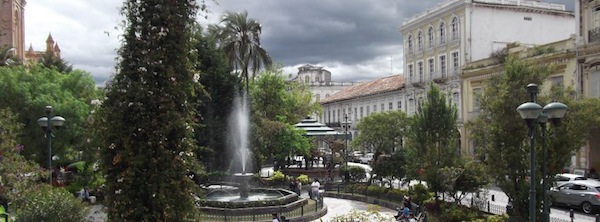
“Life should be better and richer and fuller for everyone, with opportunity for each according to ability or achievement” — Adam Truslow, coiner of “The American Dream”
So what does Cuenca, Ecuador have to do with The American Dream?
Short Answer: everything really associated with quality of life is more abundantly available in the very best cities of Latin America — with Cuenca, Ecuador a crown jewel among them — than in metro and suburban USA.
Cuenca, Latin America & The “Joy of Life Ratio”
Basically, it comes down to the Joy of Life Ratio.
You figure out the ratio by determining how many minutes out of every waking-hour in a typical day are spent:
- Doing what you love (or at least deeply enjoy) — amid beautiful and pleasant surroundings — in frustration-free and friendly environments — enhanced by beautiful weather
Versus how many minutes are spent
- Doing stuff you hate (or don’t want to do) — amidst clangorous, urban ugliness and/or soul-sucking suburban blandness — in an over-busy and time-crunched and grouchy atmosphere — made worse by inclimate weather
 Sure, the US has plenty of opportunity to pursue your passion, more than its share of beautiful cityscapes, and no small amount of lovely weather… But — and this is a giant BUT — the communities with the best mix of those things are now priced out of reach for for most Americans.
Sure, the US has plenty of opportunity to pursue your passion, more than its share of beautiful cityscapes, and no small amount of lovely weather… But — and this is a giant BUT — the communities with the best mix of those things are now priced out of reach for for most Americans.
And even staying afloat in a simply “nice” city can start to take up all of your time and energy in order to pay the bills and have enough left over for a few evenings out, leaving many Americans to wonder if there isn’t a better option out there somewhere.
Many of them are now finding that better option in the best cities of Latin America, with Cuenca, Ecuador chief among them. That’s where they find much higher Joy of Life Ratios at prices the average American can thrive in.
Of course, which Latin American city and country offers YOU the best Joy of Life Ratio depends on:
- what your passions are (if your passions are sailing, surfing and scuba diving, Cuenca won’t be for you),
- what you, particularly, find the most beautiful and pleasant, and
- what your priorities are, in terms of amenities, city life vs. country life, and so on.
Cuenca Ecuador is the city of choice for those people who’d dream of living smack in the middle of Paris, Barcelona, or Sienna (or even Manhattan or San Francisco, for that matter) within walking distance of historical, beautiful architecture, culture, and food — at a price that’s affordable for someone needing more living space than a studio apartment.
In fact when Ecuadorians live overseas, whether in the US or Europe, they typically return to Cuenca, Ecaudor and purchase real estate. Regardless of where they grew up in Ecuador, when they come back, they tend to settle in the city of Cuenca. And this is for a mix of reasons, which I’ll call…
The Big Three Pros of Cuenca, Ecuador:
1. Cuenca’s Old World Character and Ideal Climate
When more and more American cities and suburbs look like they were designed at corporate, Cuenca looks like something out of Europe with its gorgeous architecture, historic buildings, scenic public squares and parks, and tons of authentic character.
Just look at these pictures!
And for nature lovers, Cuenca sits at the cross-roads, so to speak of four major rivers and is surrounded by mountains, as it lies on the Ande’s mountain range. Most state parks are less beautiful than the cities average walking trail.
And outdoor beauty is important because the weather will make you want to be outside — with year round temperatures averaging in the mid-70s Fahrenheit, getting just cool enough in the evenings for a light sweater or jacket.
And all this in a city of only 500,000 people — about 100,000 people smaller than Portland, Oregon.
See a nice drone video of Cuenca despite the hilarious music.
2. Cuenca As a Welcoming, American-Friendly, Metropolitan City
As mentioned earlier, many Ecuadorians who have spent some time working, studying or living in the US, settle back in Cuenca when they come back to Ecuador.
That means the people in Cuenca like and are welcoming of Americans and happy to help make them part of the community. Many are fluent in English and the city has plenty of English-language bookstores, store owners, and people willing to accommodate non-Spanish speaking travelers and expats.
Overall Cuenca has a very metropolitan feel, alive with talents, dollars, and taste for life that these well-traveled and well-educated Ecuadorians and expats bring to it. Think of Cuenca as a combination of:

- Hip arts community — free symphonies, a mecca for painters and sculptors, and artisans
- College town — no less than 8 universities, and
- Tom-Sawyer-esque hometown — very family oriented with excellent schools, community involvement, safe environment.
Now think of all that rolled into a place that’s very reasonable and affordable to live.
For around $150,000 to $200,000 USD you can get a home within an easy walk of the city’s historic district, or Centro and be able to enjoy the city in a way that’s simply impossible with a US City when you’re forced into a suburb some 30 to 60 minutes away from the hart of downtown. Think of it like living near downtown Austin, or the Garden District of New Orleans, or near the Santa Monica pier — except at a price you can effort and without most of the hassles that come with living in a major metropolitan area.
Simply put, life is simpler and more enjoyable when you can walk everywhere you need to go and the walk is as beautiful and pleasant as one enjoys when strolling through historic Cuenca.
Click to learn more about real estate, cost of living, healthcare, & residency in Cuenca
Along with the beauty and cultural offerings comes all the other amenities you’d expect to find in any first rate city: an active night life, first-rate restaurants, shopping malls (if you want them), luxury boutiques, readily available high-speed internet access, and ease of travel, with an airport offering easy travel.
3. Low Cost of Living Coupled w/ Excellent Schools, Food, and Health Care
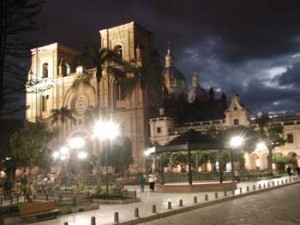 We’ve already mentioned housing costs in Cuenca — they are affordably low, with luxury, furnished rentals running around $650 a month.
We’ve already mentioned housing costs in Cuenca — they are affordably low, with luxury, furnished rentals running around $650 a month.
Factor in utilities, condo fees, cable, and everything else and you’re looking in the neighborhood of $900 a month — again for a furnished, luxury apartment in a desirable location. And the same goes for most anything else — eating out at a first-rate restaurant for two runs about $30. Buying groceries with plenty of grass-fed beaf, fresh seafood and veggies will run you about $250 a month — or about $60 a trip to the market.
And if you’d rather go to a supermarket than a farmers market — don’t ask me why you would but… as the Ecuador’s agricultural and tourism industries, Cuenca has plenty of supermarkets and malls.
Along with the lower cost of living comes the higher quality of life for families and retirees. Not only does Cuenca have an abundance of Universities, including University courses in spanish for expats, but the local schools are excellent and the community places a very high value on education in general.
Many people who move to Cuenca retire there, but if you’re moving your family there, you can rest assured that your kids will receive a first-class education without worry of payment for private schools.
And this low-cost for premium living extends right through to inexpensive, high quality health care, available at 18 hospitals and medical centers in the city, many of which are home to a large number of English-speaking doctors — something extremely important to both retirees and families!
Cuenca, Ecuador’s Short List of Negatives
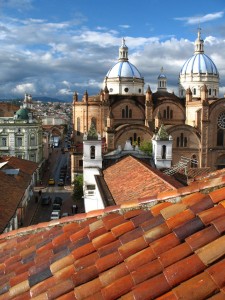
So why might you decide NOT to move to Cuenca?
Well, the negatives are tightly related to many of the positives. In other words, many looking to move to Latin America like Cuenca because it’s both English language-friendly, already popular with and home to a growing community of expats, and has established industries around welcoming US expats into the community.
And all of that is great… unless you’d rather NOT join a crowd of expats, or would rather move to a city BEFORE it becomes “the next big thing,” or if you’ve already mastered Spanish and don’t care about English-language friendliness.
Also, if you’re idea of paradise includes beaches and water sports rather than mountain living, Cuenca, Ecuador isn’t your town. Ecuador has coastal towns, but Cuenca isn’t one of them.
Finally, if you’re primary consideration is how far your dollar will stretch, Cuenca may be less expensive than North America, but it’s certainly not the cheapest place to live in Latin America, and you can be sure that the steady stream of expats are only going to drive housing and rental prices up.
Comparing Cuenca, Ecuador to Your Other Latin American Options

If you ARE looking for a more tropical or Caribbean flavor to your retirement location, take a closer look at coastal Panama and Belize.
If you like Cuenca, but want something a bit pre-trend, consider looking into Medellin, Columbia and Mendoza, Argentina.

Cuenca, Ecuador Named Top Expat Destination for 2013
The world’s top retirement spot? In truth, it depends on you. There are many appealing options for a new life in retirement as an expat, as many people are now looking for ways to stretch their dollars. It makes sense, living expenses can be cheaper, cultural experiences richer and the lifestyle more satisfying as an expat.
The top retirement spots for 2013 have a variety of cultural offerings, climates, and lifestyles. Each destination is desirable in its own way, but they all offer something increasingly hard to come by at home: A good quality of life for a reasonable price.
Here is a guide to the best places to retire overseas in 2013:
1. Ecuador
Living on $1,600 a month including rent isn’t unreasonable in a place like Cuenca, Ecuador. Buying a house or condo near the water could cost you less than a quarter of popular U.S. destinations of similar climate. When you make the move, Ecuador allows you to import your household goods duty-free, and with its new, simplified visa process, it’s no wonder Ecuador tops the list as a best-value retirement paradise.
But for many, the true draw is the perfect climate. The nation lies on the equator. The beaches are tropical, but up in the Andes, the weather is mild and spring-like year-round. Best bonus yet, it’s one of the best countries for an expat business start-up.
2. Panama
In Panama’s capital city you can have all the U.S. comforts of a big city, including outstanding healthcare, restaurants, and daily activities. On a monthly budget of $1,700 to $2,500 a month you could eat out regularly, have a housekeeper come in a few times a week, and enjoy movie dates a few times a month.

View of Panama City skyline, a top expat destination for 2013
Panama’s major draw is its Pensionado (pensioner) visa, where qualified retirees achieve residence status fairly quickly. The program entitles visa holders to discounts on medical treatment, dining, movies, and more. Most expats in Panama regret they didn’t come sooner, as many say they chose Panama for the friendly people…its rainforest…plentiful beaches and the choice of secluded or city living lifestyles.
In Panama it’s possible to put a toe in the Pacific after breakfast and in the Atlantic before dinner…on the same day. There are cloud forests for bird watching, such as the resplendent quetzal, and even orchid gazing, all in the same weekend.
3. Malaysia
Malaysia is Asia’s Panama. That is to say, this country is a regional and a global hub, for trade, for business, and for culture. Malaysia is a multi-ethnic and multi-cultural country which attracts many tourists annually.
Penang, Malaysia offers expats an affordable living under $2,000 a month in what is considered “luxury housing” in the states. Here, an expat can eat out often and enjoy all the things the city has to offer along with top notch medical care at an affordable price.
Malaysian expats feel the country has everything. Its weather is a tropical 82 F all year round and its beaches, islands, and jungles are pristine. It has some of the region’s best street food, great restaurants, bars, shopping malls, and movie theaters—and it’s all affordable.
4. Mexico
Mexico’s colorful and vibrant culture does rank high with expats who live here…look deeper and Mexico has much to offer. Mexico is an easy, convenient choice for many expats who are seeking a first-world country at bargain prices. No wonder a million or more expats make Mexico their home.
Today’s Mexico offers modern highways and airports, cable and satellite TV, Internet, and many other items expats enjoy at home. Want your “big” U.S. lifestyle abroad, you’ll get it in Mexico with an overall cost of living at about half of what you’d pay in the U.S. or Canada.
And one of Mexico’s biggest pluses is its sheer size and variety. If you want beach, Mexico has thousands of miles of it—chic resorts, sleepy beach towns, and everything in between. Prefer cool, mountain scenery? Mexico has that, too. More likely than not, whatever you’re looking for in a retirement destination you will find it in Mexico.
5. Costa Rica
Costa Rica is where you go to live the lush life. It is lush with nature—misty rain forests, extraordinary wildlife, active volcanoes, and fabulous beaches—as well as such comforting amenities as malls, supermarkets, restaurants, museums, and social clubs.
U.S. retirees have flocked here for years, drawn by its mild climate, prosperity, literacy rate, health care, and, significantly, stable government. Another plus: Costa Rica’s commitment to a thriving natural park system that is second to none in Latin America. This is as biodiverse a country as you’ll find anywhere. The country offers micro-climates, meaning you can fine-tune your weather by moving up and down the hills.
Though not the bargain it was a decade ago, Costa Rica continues to draw moderate-income retirees, who meet the country’s requirement of income of $1,000 per month from Social Security or a pension. Best part, residence is easy enough that just about anybody can do it. Residents are eligible to join the universal health-care system, known as Caja. The cost, based on income, can be as low as $49 a month. After that, care is free.
6. Nicaragua
Want a budget-friendly retirement destination? Think Nicaragua. Geographically, the nation is blessed with two long coastlines and two big lakes, plus volcanoes, highlands, rain forest, and rivers. In this manner, it has everything Costa Rica and Panama have, but it’s less discovered and developed and available to adventurers and eco-travelers at bargain rates.
Property values have fallen significantly in this country over the past several years, thanks to Ortega’s re-election and then the global recession. As a result, you can buy one of Granada’s classic Spanish-colonial haciendas for $50,000 or less. A couple could live comfortably in this city on a budget of $1,200 per month.
Best of all, its lower cost of living does not mean you have to sacrifice the quality of life, in fact, it’s possible to live in Nicaragua with even more luxuries than you were accustomed to, simply because the prices are so low.
Retired Expat Communities
All these destinations have large expat communities, so doing your research can put you among other people like you; with similar interests. Learning a foreign language will probably be a requirement; but again if you have a sense of adventure, and don’t want the typical cookie cutter retirement this could be something new and stimulating.
The Ecuador 3 Count, where we bring you 3 Ecuador stories that you shouldn’t miss.

Up and close with giant tortoises – Santa Rosa – Santa Cruz Island, Galapagos Islands Ecuador
1: Here’s Why More Expats Are Exploring Ecuador
It’s all happening in Ecuador: as President Correa is re-elected, the nation opens a new international airport in Quito, where foodies are converging, the Galapagos Islands still lure visitors as a top Eco-destination and a stunning new rain forest eco-lodge opens in the clouds.
The only true way to see the cluster of islands known as the Galapagos is by boat. You can spend a few days or several weeks island hopping. They’re not pretty as such but enormously diverse in plant and animal life. One minute you’re walking over black molten rock and on the next island it is all lush green rolling hills with tortoises.
A visit to Quito’s Old Town food district is a blend of colonial and indigenous cultures through the melting pot of food, from ceviche to colaciones (roasted peanut). Ecuadorean cuisine really has to be experienced first-hand.
Three hours west of Quito sits a new eco-lodge nestled 3,000 ft up in the cloud forests. Mashpi Lodge. This name does not do it justice. Designed by Ecuadorean architect Alfredo Ribadeneira, with 22 rooms and suites decked out with Philippe Starck-designed bath tubs, it is a five-star glass enclosed space dome that looks like it’s come from the future and landed in the middle of a nature reserve. Here, Eco-friendly credentials and a team of experts are helping to chart the thousands of different species that inhabit the forest. The views are breathtaking.
2: How Being an Expat in Ecuador Will Change Your Life

Reinvent yourself in Ecuador.
Up second, surviving the first few days, months or years as an expat in Ecuador. The adrenaline has worn off a bit, you have unraveled a few of the mysteries of being a new expat. At first, expats find they’ve succeeded in establishing a routine that looks a lot like their old one… perhaps with better weather, nicer scenery, and lower cost of living. And that is okay for some, but watch out you don’t bring your homeland expectations to your new expat life.
But if you do have a real desire to change, reinvent yourself and grow, moving abroad can help make it possible. The thing to remember about moving abroad… the move itself will not immediately change you, yourself. You can’t simply move to another country one day and expect to wake up the next a different person. It takes time and adaptation.
Once you’ve taken a closer look at your expat life, you might just find it’s the right time to reinvent. Being an expat can help reveal things that may have been stuck in the corner of your brain for years… a novelist, a painter, a travel writer, an entrepreneur. You usually find them about the time you’ve taken care of the necessities, gotten used to your new expat life. And then it will be time to ask, “What do we do now?” and become someone or do something you never thought possible.
3. Foodies are Discovering Quito on Foot
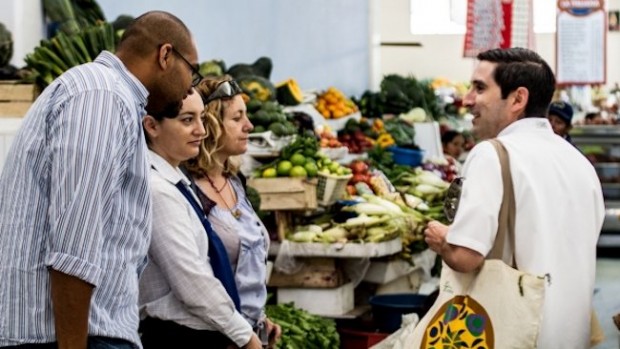
Executive Chef Andrés Dávila leads guests through outdoor markets and food shops along the colorful streets of the Ecuadorean capital.
Finally: Quito’s Great Food Walk. The city doesn’t yet have the foodie allure of Lima, but this South American capital is getting increasing attention for its cuisine. As more gastronomy-focused tours of Ecuador pop up each year, visitors are being offered excellent cups of locally grown coffee and addictive, Ecuadorean chocolates.
The newest and grandest hotel in the city center, Casa Gangotena offers guests a walking gastronomy tour. The morning tour with the hotel’s chefs skips the tourist district and heads directly to local shops and markets where traditional sweets, grains, and spices are featured. With a climate that goes from equatorial tropical seaside to high in the Andes, there’s little that won’t grow here in the rich volcanic soil.
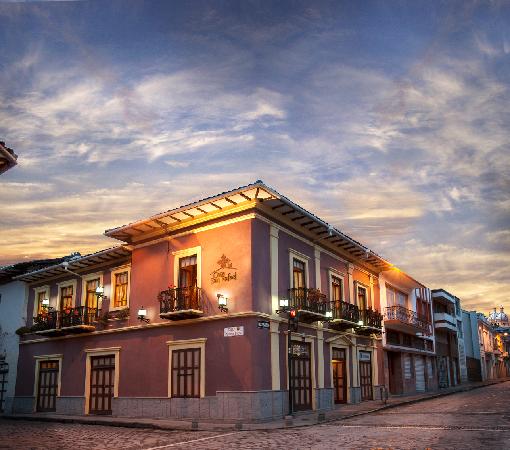
Affordable Cuenca, Ecuador
Thinking about making the move abroad and wondering where is the best location for a soon-to-be expat? Your answer might just be Ecuador, the newest hot spot destination for retirees and expats wanting the good life without the financial stress.
Ecuador is the world’s best place to retire overseas on a retirement budget. Here you can live better than you do in the U.S. for less money. The cost of living is low, and the cost of real estate is one of the lowest for Latin America. With monthly estimated living expenses ranging from $900 to $1,400, Ecuador surpasses Panama, Mexico, and Costa Rica.
1. Real Estate in Ecuador Is Affordable
If you want to call Ecuador home for good, the process of buying a house is straightforward. Real estate prices are still relatively low. Some expats find it is still possible to build new residential construction for under $100 per square foot. But remember, this is local construction… cement or red clay brick. There is almost no wood construction in Ecuador.
2. Getting Around Ecuador Is Cheap and Easy
Most expats find getting around Ecuador easy; most choose to ditch their cars and use public transportation or walk. Ecuador also has a good mass transit system. Quito, the nation’s capital, is well-equipped with buses and taxis, most of which are constantly available and cost an average of $1.00 per hour of travel.
3. Ecuador Offers Great Health Care
Most expats are pleasantly surprised with the medical system in Ecuador, especially the quality of care. Medical costs are one-tenth of what they are in the States and the hospitals are state-of-the-art and offer many healthcare options for expats.
4. Latin American Cuisine at Its Best
So how’s the food? One would be hard-pressed to go hungry in Ecuador for lack of options. In Quito and Guyaquil, you can get any type of food in the world; while outside of the city, local fruits and vegetables are in abundance along with chicken and pork. As one moves closer to the shore, the cuisine varies slightly. The same fresh fruit and vegetables are complemented by a huge variety of fresh fish.

5. American Culture
As much as an expat retiree may want to get away from it all, a little homesickness is inevitable from time to time. Ecuador’s English-speaking expats along with other English-speaking people and American franchises, is enough to ward off homesickness should it arise. Cuenca is a popular mountain town, which now has a few thousand English-speaking expats living there.
6. Ecuador’s Currency Is the U.S. Dollar
One thing to remember about Ecuador is that this country uses the U.S. dollar. For an American expat, this means it’s easier to understand what things really cost; it’s easier to keep track of your spending; and, very important, you avoid any currency-exchange risk. You may still have local inflation to contend with, but you won’t have to worry about that being compounded when the exchange rate goes against you.
















